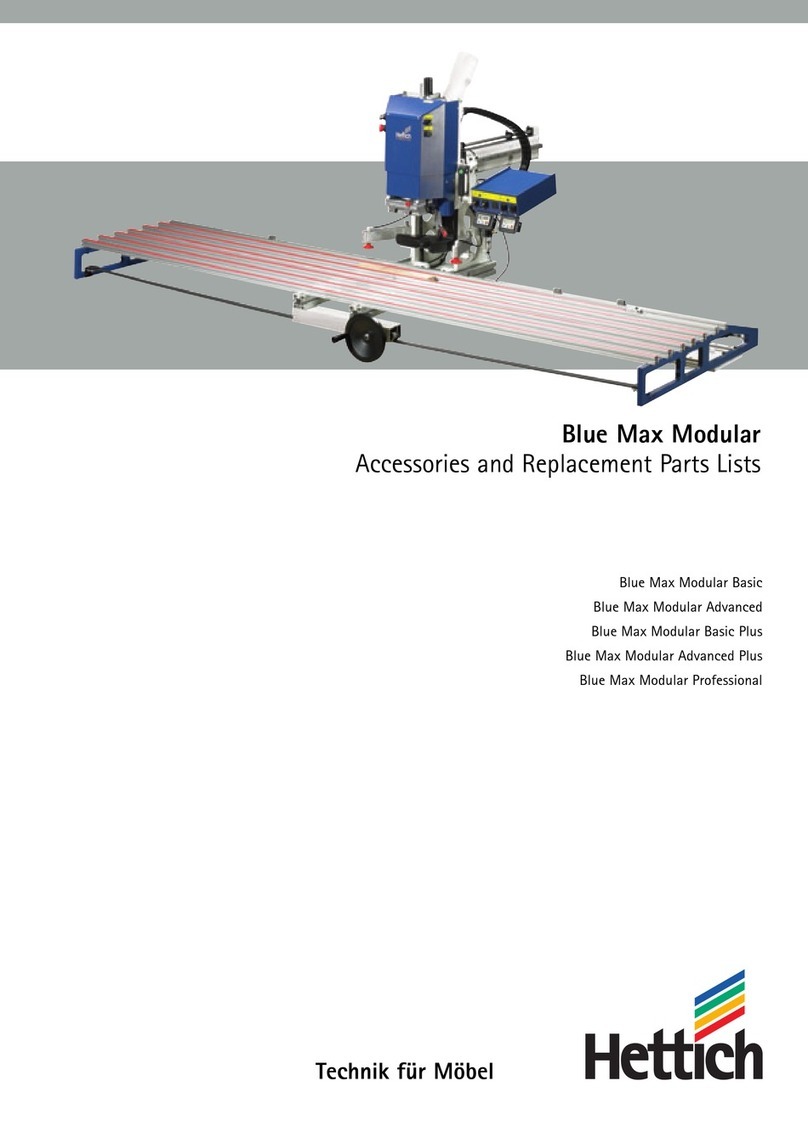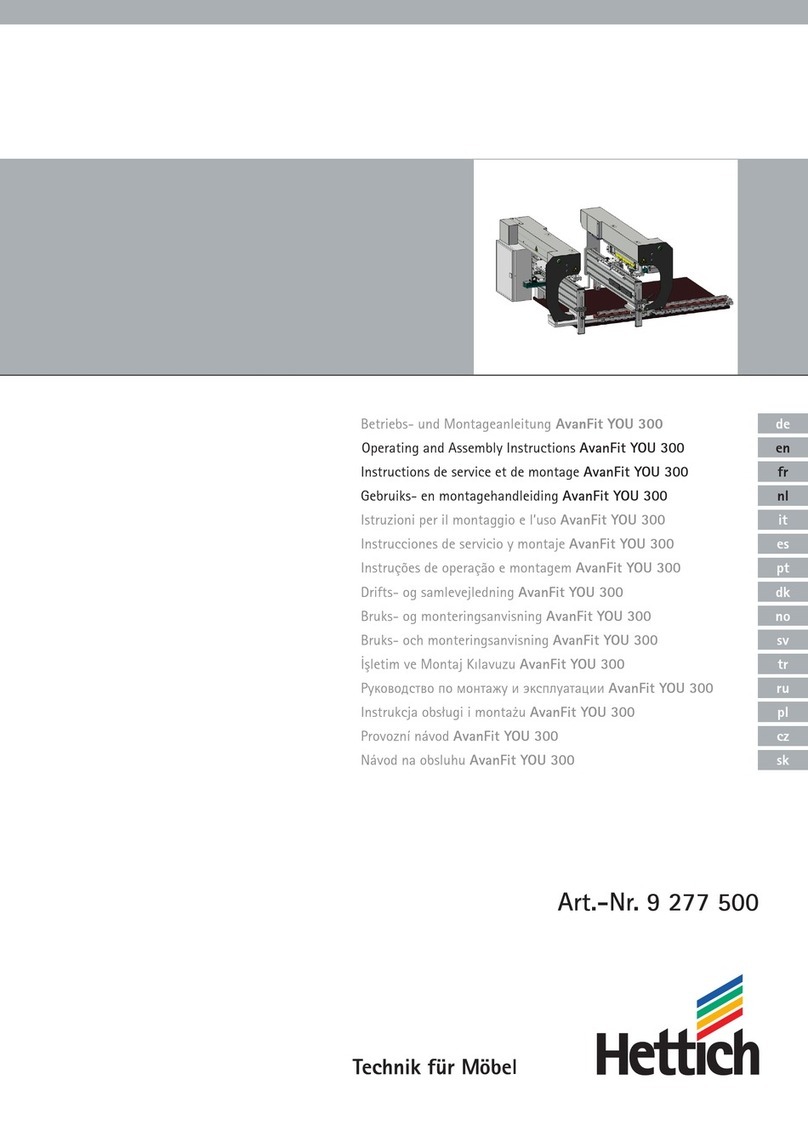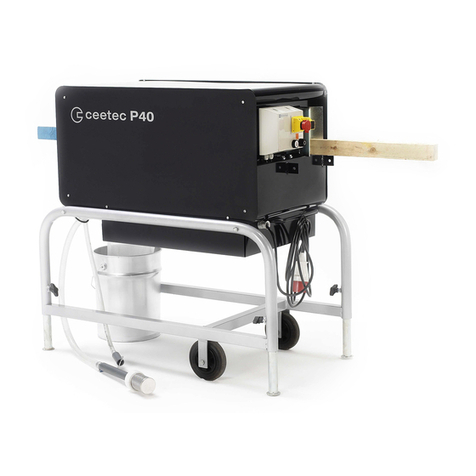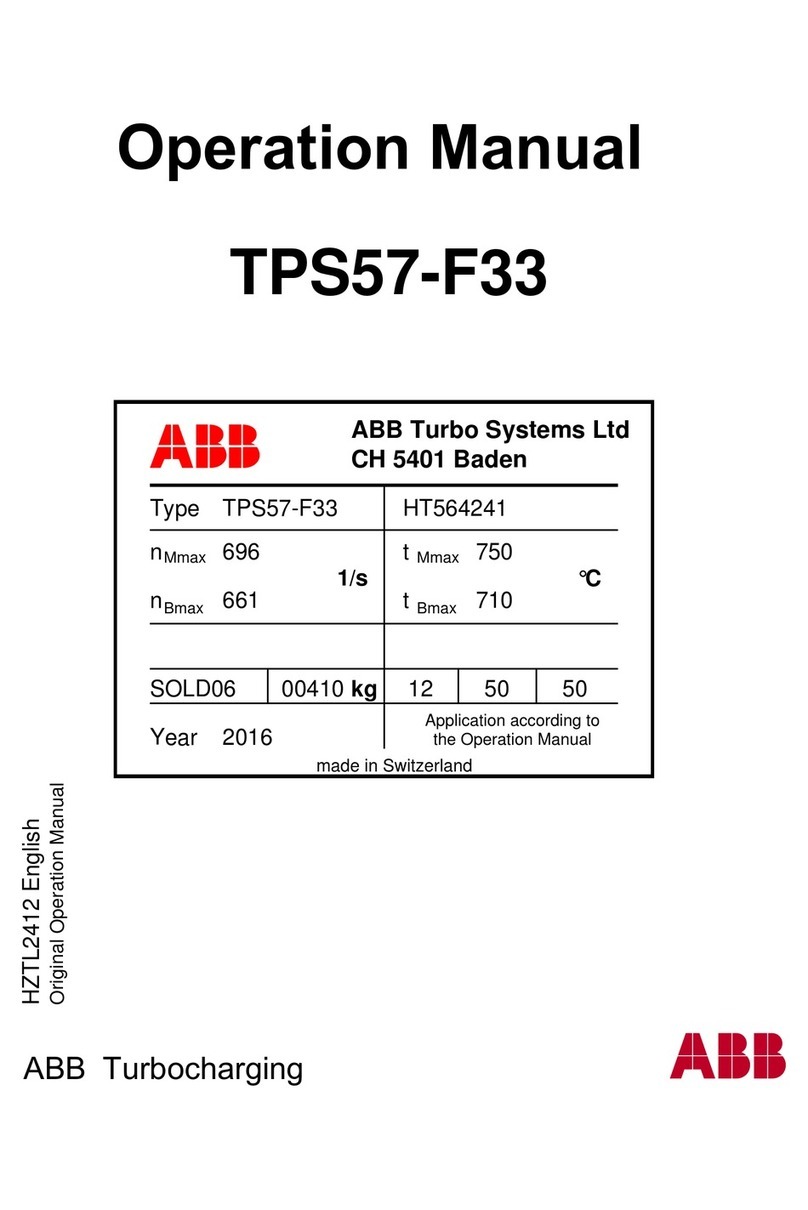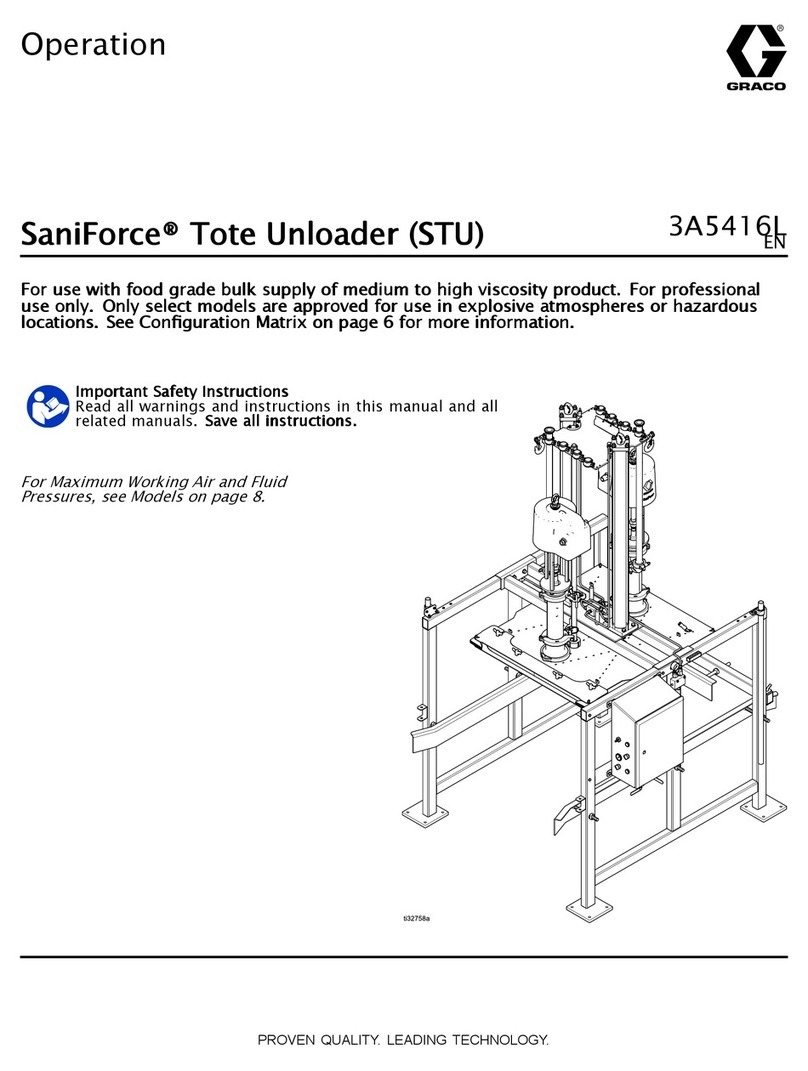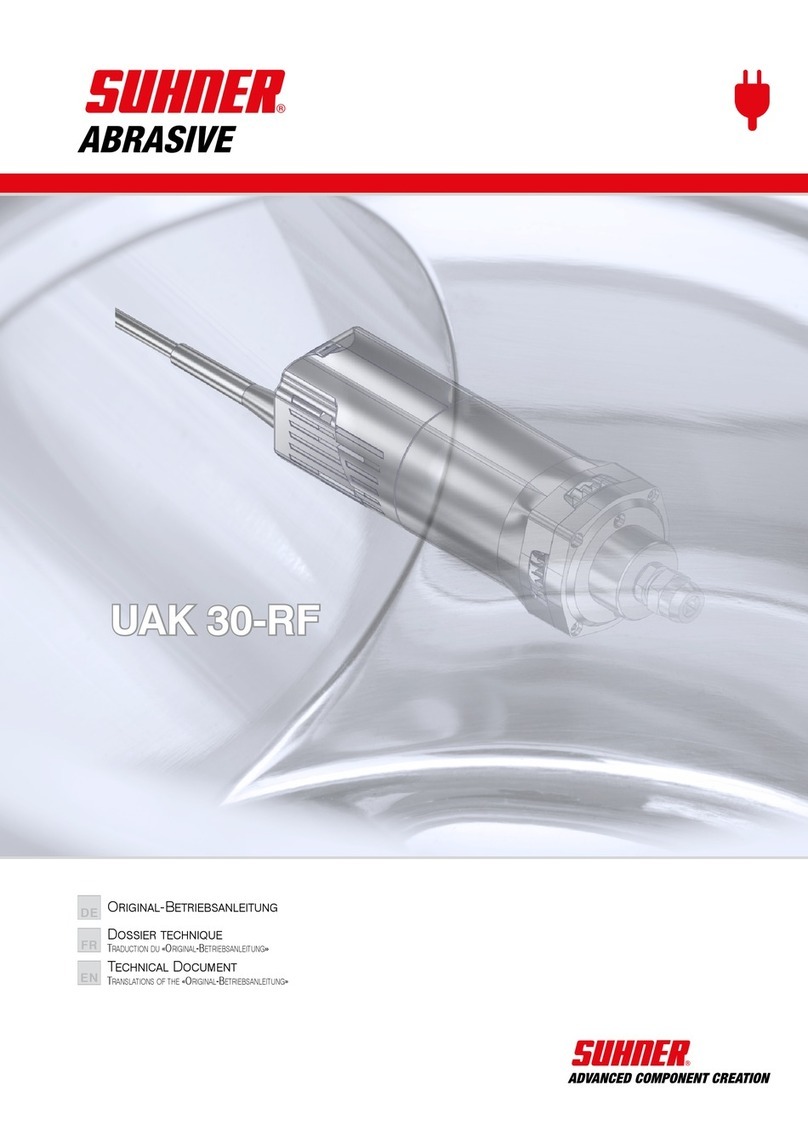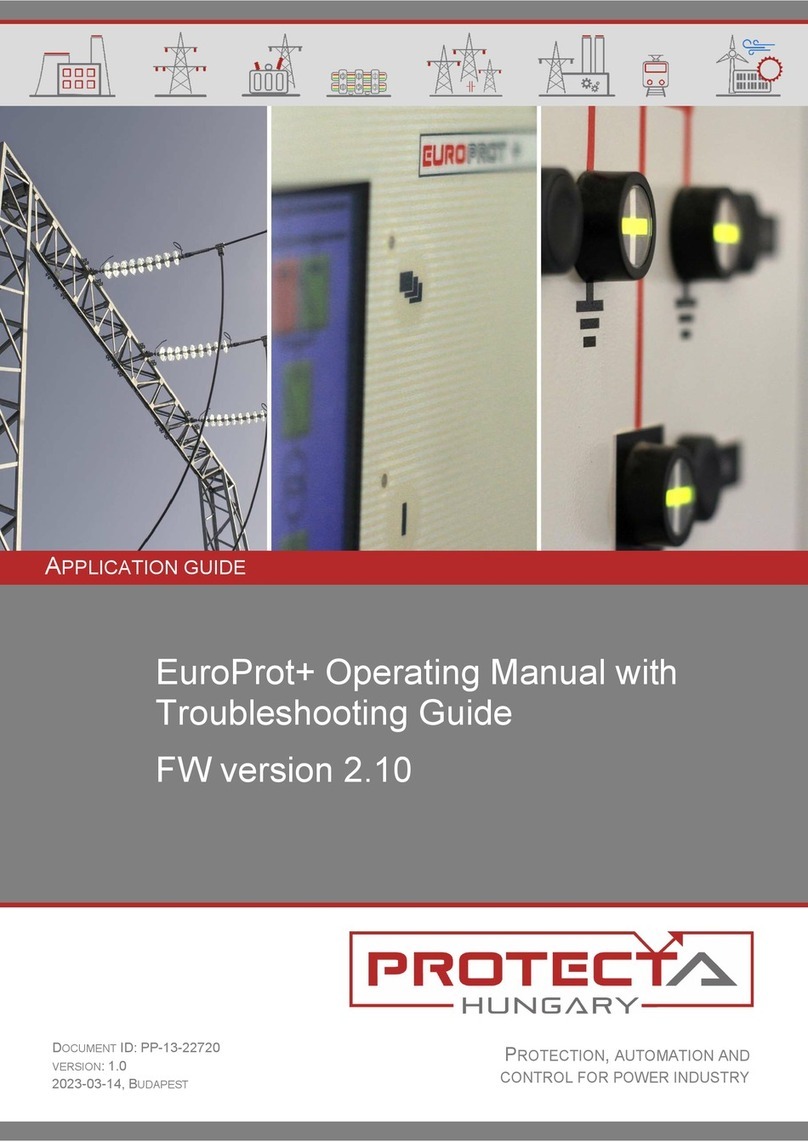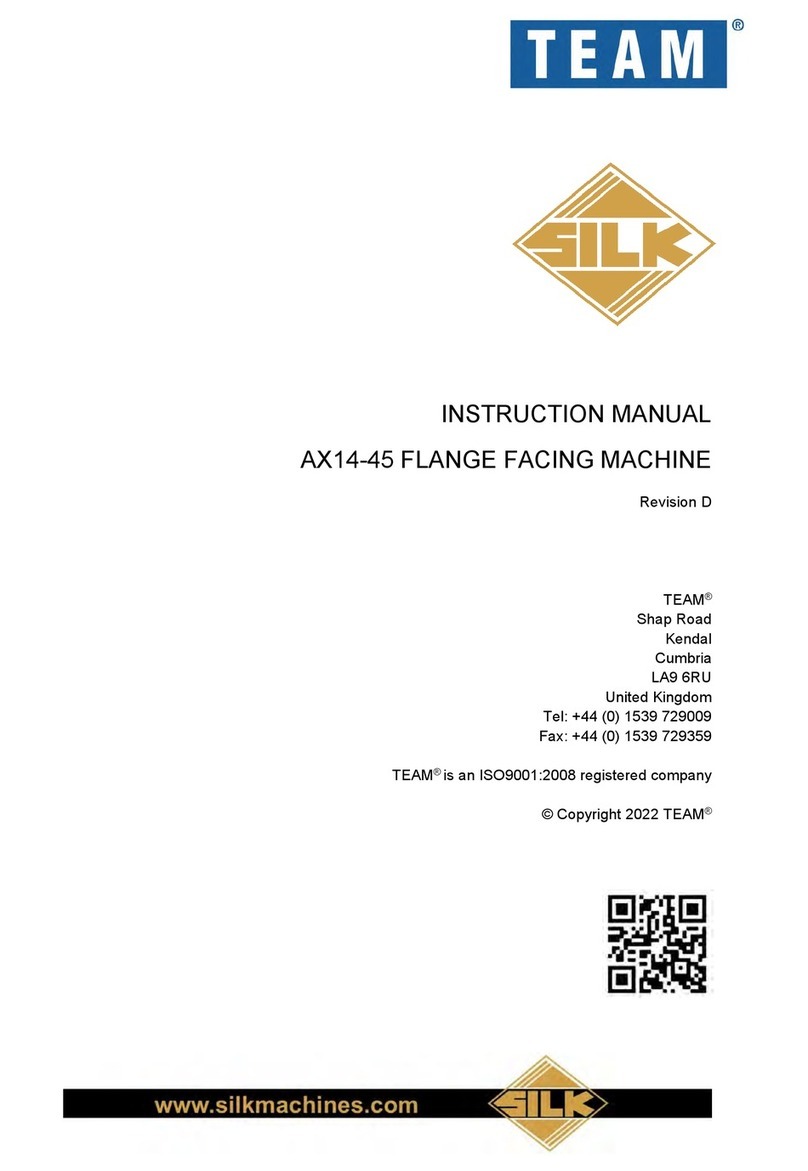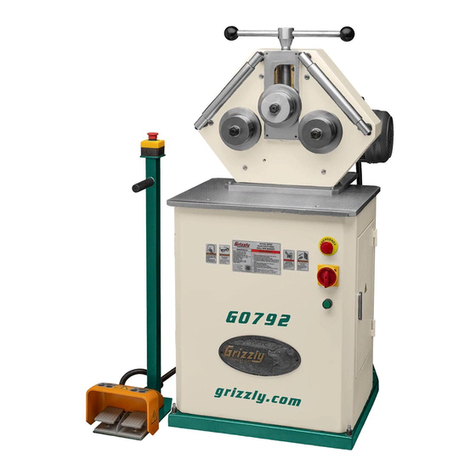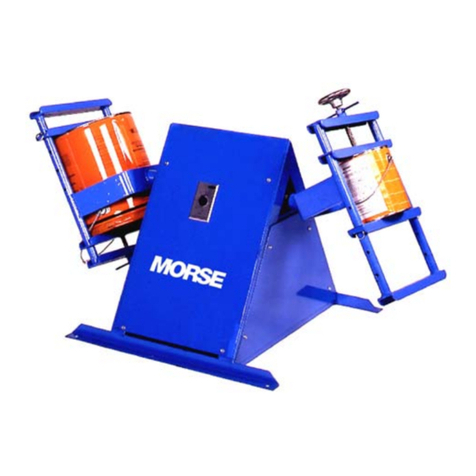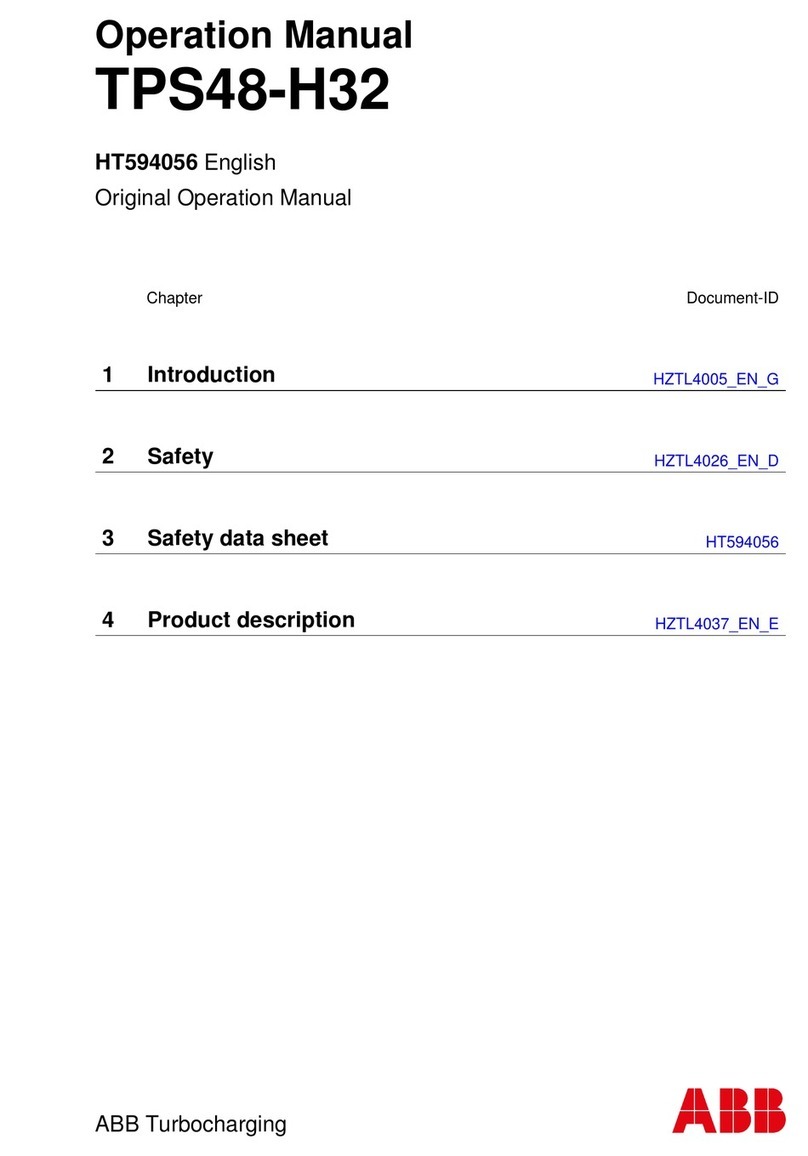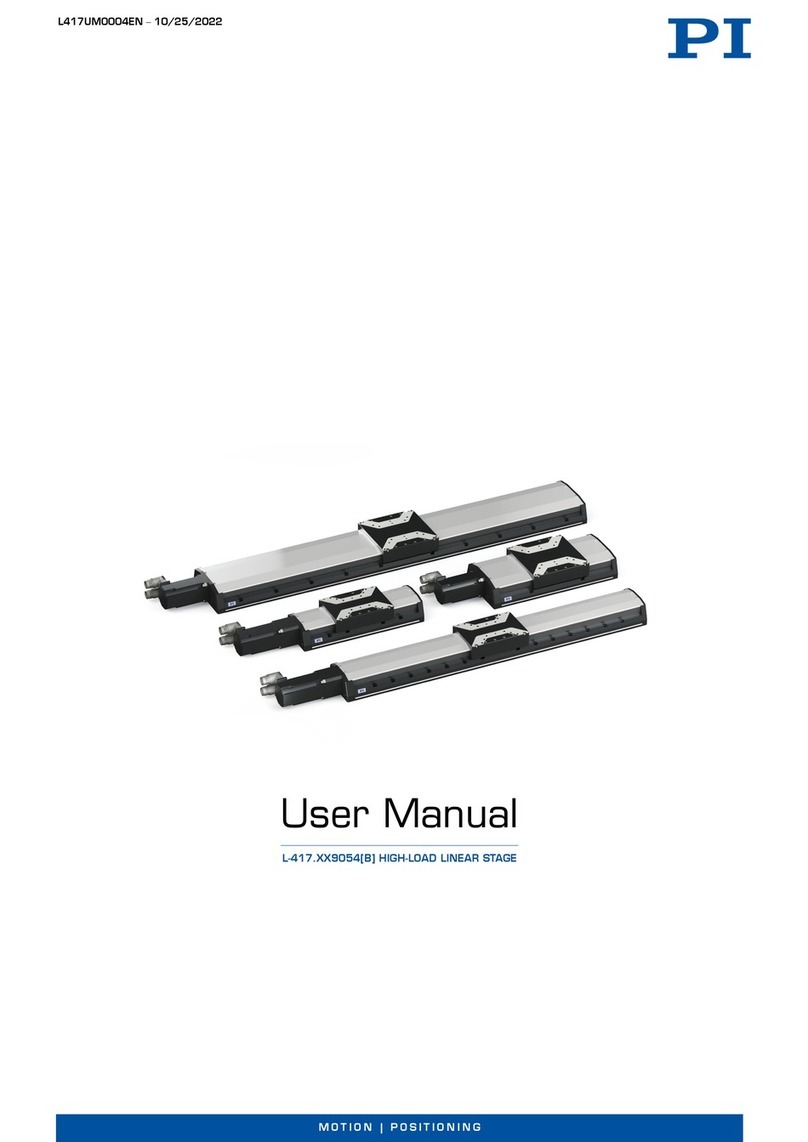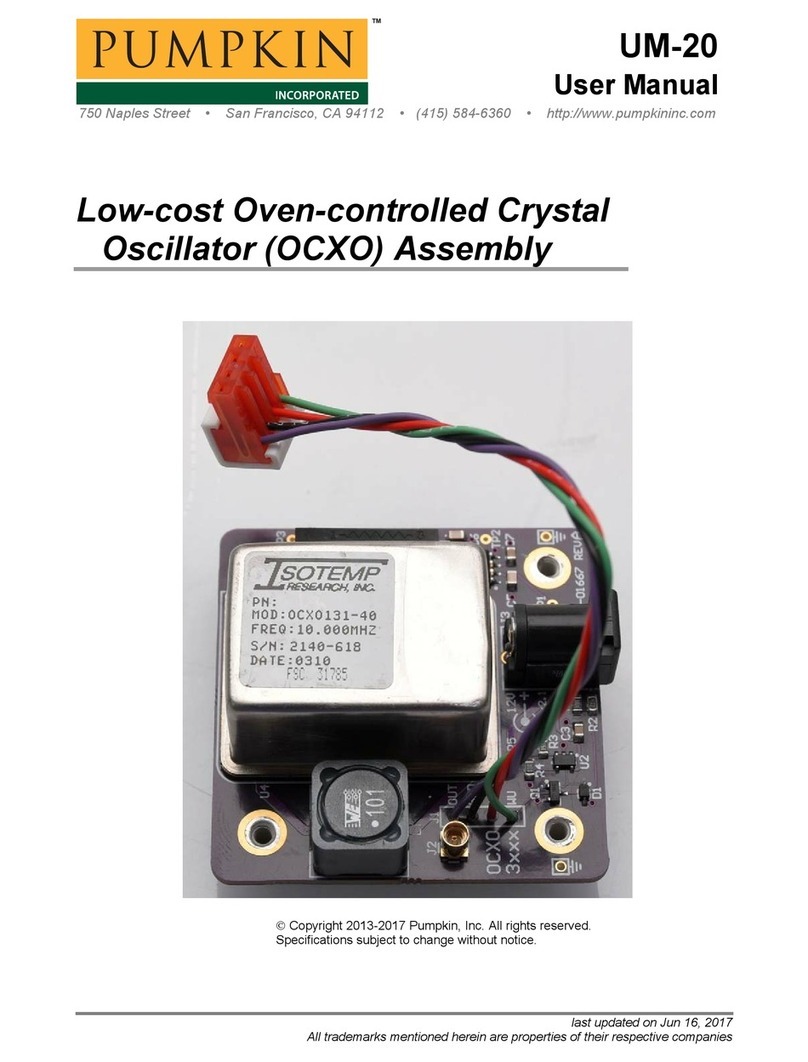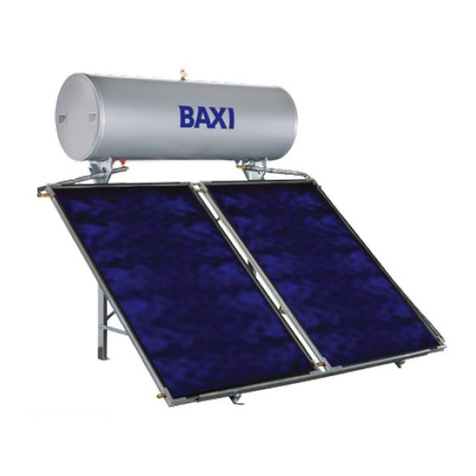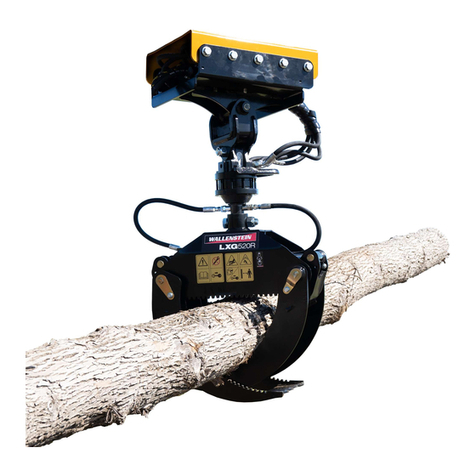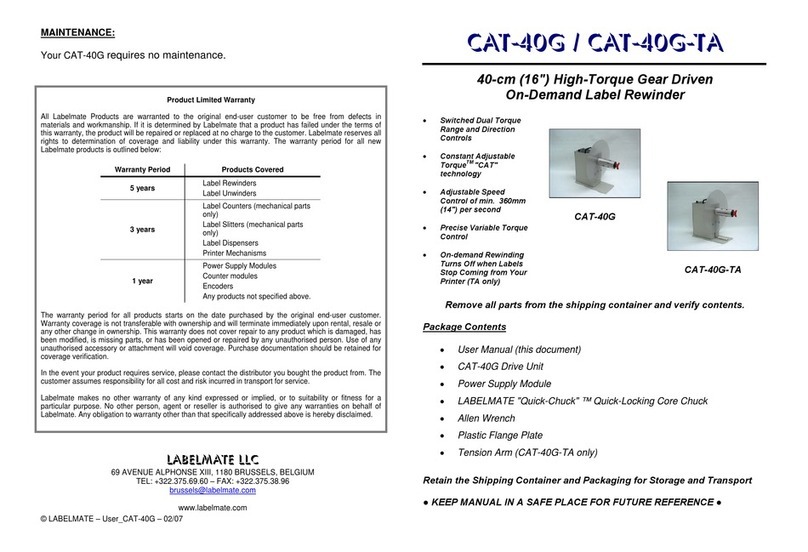Hettich EBA 200 User manual

AB1800en_SARev.: 03 / 11.2023

Translation of the original operating instructions
EBA 200 / 200 S
Operating instructions
1 / 39
Rev.: 03 / 11.2023
AB1800en_SA

AB1800en_SARev.: 03 / 11.2023
2 / 39
Andreas Hettich GmbH & Co.KG
Föhrenstrasse 12
D-78532 Tuttlingen, Germany
Telephone: +49 (0)7461 705-0
Fax: +49 (0)7461 705-1125
Email: [email protected], [email protected]
Internet: www.hettichlab.com
©2023 – All rights reserved

3 / 39
Rev.: 03 / 11.2023
AB1800en_SA
Table of contents
Table of contents
1 About this document. . . . . . . . . . . . . . . . . . . . . . . . . . . . . . . . . . . 5
1.1 Use of this document. . . . . . . . . . . . . . . . . . . . . . . . . . . . . . . . 5
1.2 Gender reference. . . . . . . . . . . . . . . . . . . . . . . . . . . . . . . . . . . . 5
1.3 Symbols and labels in this document. . . . . . . . . . . . . . . . . . . . . 5
2 Safety. . . . . . . . . . . . . . . . . . . . . . . . . . . . . . . . . . . . . . . . . . . . . . 5
2.1 Intended use. . . . . . . . . . . . . . . . . . . . . . . . . . . . . . . . . . . . . . . 5
2.2 Personnel requirements. . . . . . . . . . . . . . . . . . . . . . . . . . . . . . . 6
2.3 Operator's responsibility. . . . . . . . . . . . . . . . . . . . . . . . . . . . . . 7
2.4 Safety instructions. . . . . . . . . . . . . . . . . . . . . . . . . . . . . . . . . . . 7
3 Device overview. . . . . . . . . . . . . . . . . . . . . . . . . . . . . . . . . . . . . . 9
3.1 Technical data. . . . . . . . . . . . . . . . . . . . . . . . . . . . . . . . . . . . . . 9
3.2 European registration. . . . . . . . . . . . . . . . . . . . . . . . . . . . . . . . 11
3.3 Important labels on the packaging. . . . . . . . . . . . . . . . . . . . . . . 11
3.4 Important labels on the device. . . . . . . . . . . . . . . . . . . . . . . . . . 12
3.5 Operating and indicator elements. . . . . . . . . . . . . . . . . . . . . . . 13
3.5.1 Control. . . . . . . . . . . . . . . . . . . . . . . . . . . . . . . . . . . . . . . . 13
3.5.2 Indicator elements. . . . . . . . . . . . . . . . . . . . . . . . . . . . . . . 13
3.5.3 Controls. . . . . . . . . . . . . . . . . . . . . . . . . . . . . . . . . . . . . . . 13
3.6 Original spare parts. . . . . . . . . . . . . . . . . . . . . . . . . . . . . . . . . . 14
3.7 Scope of supply. . . . . . . . . . . . . . . . . . . . . . . . . . . . . . . . . . . . 14
3.8 Returns. . . . . . . . . . . . . . . . . . . . . . . . . . . . . . . . . . . . . . . . . . . 14
4 Transport and storage. . . . . . . . . . . . . . . . . . . . . . . . . . . . . . . . . . 15
4.1 Transport and storage conditions. . . . . . . . . . . . . . . . . . . . . . . 15
4.2 Fastening the transport lock. . . . . . . . . . . . . . . . . . . . . . . . . . . 15
5 Commissioning. . . . . . . . . . . . . . . . . . . . . . . . . . . . . . . . . . . . . . . 16
5.1 Unpacking the centrifuge. . . . . . . . . . . . . . . . . . . . . . . . . . . . . . 16
5.2 Remove the transport lock. . . . . . . . . . . . . . . . . . . . . . . . . . . . 16
5.3 Setting up and connecting the centrifuge. . . . . . . . . . . . . . . . . 17
5.4 Switching the centrifuge on and off.. . . . . . . . . . . . . . . . . . . . . . 18
6 Operation . . . . . . . . . . . . . . . . . . . . . . . . . . . . . . . . . . . . . . . . . . . 19
6.1 Opening and closing the lid. . . . . . . . . . . . . . . . . . . . . . . . . . . . 19
6.2 Removing and installing the rotor. . . . . . . . . . . . . . . . . . . . . . . . 19
6.3 Loading. . . . . . . . . . . . . . . . . . . . . . . . . . . . . . . . . . . . . . . . . . . 20
6.4 Centrifugation. . . . . . . . . . . . . . . . . . . . . . . . . . . . . . . . . . . . . . 22
6.4.1 Centrifugation in continuous operation. . . . . . . . . . . . . . . . 22
6.4.2 Centrifugation with time preselection. . . . . . . . . . . . . . . . . 22
6.4.3 Short-term centrifugation. . . . . . . . . . . . . . . . . . . . . . . . . . 22
6.5 Quick stop function. . . . . . . . . . . . . . . . . . . . . . . . . . . . . . . . . . 23
7 Software operation. . . . . . . . . . . . . . . . . . . . . . . . . . . . . . . . . . . . 23
7.1 Centrifugation parameters. . . . . . . . . . . . . . . . . . . . . . . . . . . . . 23
7.1.1 Input with the SELECT button. . . . . . . . . . . . . . . . . . . . . . 23
7.1.2 Runtime t. . . . . . . . . . . . . . . . . . . . . . . . . . . . . . . . . . . . . . 25
7.1.3 Speed, RPM. . . . . . . . . . . . . . . . . . . . . . . . . . . . . . . . . . . 25

AB1800en_SARev.: 03 / 11.2023
4 / 39
Table of contents
7.1.4 Relative centrifugal force, RCF. . . . . . . . . . . . . . . . . . . . . . 25
7.1.5 Relative centrifugal force RCF and centrifuging radius RAD 26
7.1.6 Centrifugation of substances or mixtures of substances
with a density higher than 1.2 kg/dm3. . . . . . . . . . . . . . . . 26
7.2 Machine Menu. . . . . . . . . . . . . . . . . . . . . . . . . . . . . . . . . . . . . . 27
7.2.1 Querying system information. . . . . . . . . . . . . . . . . . . . . . . 27
7.2.2 Cycle counter. . . . . . . . . . . . . . . . . . . . . . . . . . . . . . . . . . . 27
7.2.3 Querying operating hours and centrifugation runs. . . . . . . . 28
7.2.4 Audible signal. . . . . . . . . . . . . . . . . . . . . . . . . . . . . . . . . . . 29
7.2.4.1 General. . . . . . . . . . . . . . . . . . . . . . . . . . . . . . . . . . . . 29
7.2.4.2 Setting an audible signal. . . . . . . . . . . . . . . . . . . . . . . 29
7.2.5 Visual signal. . . . . . . . . . . . . . . . . . . . . . . . . . . . . . . . . . . . 30
7.2.6 Automatic unlocking of the lid. . . . . . . . . . . . . . . . . . . . . . . 30
7.2.7 Indicator backlight. . . . . . . . . . . . . . . . . . . . . . . . . . . . . . . 31
8 Cleaning and care. . . . . . . . . . . . . . . . . . . . . . . . . . . . . . . . . . . . . 31
8.1 Overview table. . . . . . . . . . . . . . . . . . . . . . . . . . . . . . . . . . . . . . 31
8.2 Cleaning and disinfection instructions. . . . . . . . . . . . . . . . . . . . 32
8.3 Cleaning. . . . . . . . . . . . . . . . . . . . . . . . . . . . . . . . . . . . . . . . . . 32
8.4 Disinfection. . . . . . . . . . . . . . . . . . . . . . . . . . . . . . . . . . . . . . . . 33
8.5 Maintenance. . . . . . . . . . . . . . . . . . . . . . . . . . . . . . . . . . . . . . . 34
9 Troubleshooting. . . . . . . . . . . . . . . . . . . . . . . . . . . . . . . . . . . . . . 35
9.1 Fault description. . . . . . . . . . . . . . . . . . . . . . . . . . . . . . . . . . . . 35
9.2 Perform a MAINS RESET. . . . . . . . . . . . . . . . . . . . . . . . . . . . . 36
9.3 Emergency release. . . . . . . . . . . . . . . . . . . . . . . . . . . . . . . . . . 36
9.4 Replacing the mains input fuse. . . . . . . . . . . . . . . . . . . . . . . . . 37
10 Disposal. . . . . . . . . . . . . . . . . . . . . . . . . . . . . . . . . . . . . . . . . . . . 38
10.1 General instructions. . . . . . . . . . . . . . . . . . . . . . . . . . . . . . . . . . 38
11 Index. . . . . . . . . . . . . . . . . . . . . . . . . . . . . . . . . . . . . . . . . . . . . . . 39

5 / 39
Rev.: 03 / 11.2023
AB1800en_SA
Safety
General symbols
Intended use
1 About this document
1.1 Use of this document
■Read this document carefully and in full before commissioning the
device for the rst time.
Observe other enclosed instruction sheets where necessary.
■This document is part of the device and must be kept within easy reach.
■This document must be included if the device is passed on to a third
party.
■The current version of the document in the available languages can be
found on the manufacturer's website: ⮫
https://www.hettichlab.com/de/
download-center/
1.2 Gender reference
The employed masculine or feminine language form is to facilitate reading.
In the spirit of equal treatment, corresponding terms apply in principle to all
genders and do not imply any valuation.
1.3 Symbols and labels in this document
The following markers are used in this document to highlight instructions,
results, listings, references and other elements:
Marker Explanation
1.
2.
3.
...
Step-by-step instructions
áResults of action steps
æReferences to sections of the document and
other applicable documents
■...
■...
Listings without a xed order
[Buttons]
Controls (for example: buttons, switches)
‘Indicator’
Indicator elements (for example: signal lights,
screen elements)
2Safety
2.1 Intended use
The centrifuge EBA 200 / 200 S is an in vitro diagnostic medical device
in accordance with the In Vitro Diagnostic Medical Devices Regulation (EU)
2017/746. The device is used for centrifugation as well as enrichment of
sample material of human origin for subsequent further processing for diag-
nostic purposes. The user can set each of the variable physical parameters
within the limits set by the device.

AB1800en_SARev.: 03 / 11.2023
6 / 39
Safety
Non-intended use
Foreseeable misuse
Required qualifications
The user is trained in laboratory practice and able to carry out the work
assigned to them, and to recognise and prevent potential hazards inde-
pendently.
Personal protective equipment
The centrifuge may only be used by qualied personnel in closed laborato-
ries. The centrifuge is only intended for the use referred to above. Intended
use also includes observing all instructions in the user manual and compli-
ance with inspection and maintenance. Any other use or use beyond this is
considered improper. Andreas Hettich GmbH & Co. KG shall not be liable
for any damage arising from this.
■The centrifuge is not suitable for use in explosive or radioactive, or
biologically or chemically-contaminated atmospheres.
■The user must take appropriate actions when centrifuging hazardous
substances or mixtures of substances that are toxic, radioactive or con-
taminated with pathogenic microorganisms.
The manufacturer generally recommends using only centrifuge tubes
with special screw caps for hazardous substances.
Use sealable centrifuge tubes with a biosafety system for materials of
risk groups 3 and 4.
■The manufacturer does not recommend centrifugation with ammable or
explosive materials.
■The manufacturer does not recommend centrifugation with materials
that react chemically with one another with high energy.
The manufacturer recommends using only accessories that it has approved
for the intended purpose.
Only operate the centrifuge under supervision.
2.2 Personnel requirements
The user has read the user manual in full and familiarised themselves with
the device.
NOTICE
Damage to the device by unauthorised personnel
−Tampering with and modications to devices by unau-
thorised persons are at the operating organisation's own
risk and will result in the loss of all warranty and liability
claims.
Trained user
Lack of personal protective equipment or unsuitable personal protective
equipment increases the risk of impaired health and injury.
■Only use personal protective equipment that is in proper condition.
■Only use personal protective equipment that is adapted to the person
(correct size, for example).
■Observe instructions on other protective equipment for specic activities.

7 / 39
Rev.: 03 / 11.2023
AB1800en_SA
Safety
Provide information
Training of personnel
2.3 Operator's responsibility
Follow the instructions in this document for proper and safe
use of the device.
Keep the user manual for future reference.
■Following the instructions in this document will help:
–To avoid dangerous situations.
–To minimise repair costs and downtime.
–To increase the reliability and service life of the device.
■The operator is responsible for compliance with company regulations,
standards and national laws.
■Note and keep the revision of the document separate from the docu-
ment. If lost, the document can be replaced in the correct revision.
■Keep the user manual available at the place where the device is used.
■Pass the user manual on to the buyer when the device is sold.
Lack of knowledge when working with the device may result in serious
injury or death.
■Instruct personnel on their tasks and the associated risks in accordance
with the instruction.
2.4 Safety instructions
Reporting serious incidents and notiable incidents
In the event of serious incidents or notiable incidents
involving the device or its accessories, these must be
reported to the manufacturer and, where applicable, to the
competent authority where the user and/or the patient is
registered.
DANGER
Risk of contamination for the user due to inadequate
cleaning or failure to observe the cleaning instructions.
−Observe cleaning instructions.
−Wear personal protective equipment when cleaning the
device.
−Observe laboratory regulations (e.g. TRBAs, the German
Protection against Infection Act, hygiene plan) for han-
dling biological agents.
DANGER
Fire and explosion hazard due to hazardous substances in
samples.
−Observe relevant regulations and directives for handling
chemicals and hazardous substances.
−Do not use aggressive chemicals (for example: dan-
gerous, corrosive extraction agents such as chloroform,
strong acids).

AB1800en_SARev.: 03 / 11.2023
8 / 39
Safety
WARNING
Dangers due to insufcient maintenance or maintenance not
carried out on time.
−Follow maintenance intervals.
−Check the device for visible damage or defects.
If any visible damage or defects are present, take the
device out of service and inform a service technician.
WARNING
Risk of electric shock due to ingress of water or other liq-
uids.
−Protect the device against external liquids.
−Do not pour any liquids into the interior of the device.
−Transport using original transport packaging.
WARNING
Contamination with hazardous substances and substance
mixtures!
Observe the following actions for substances and substance
mixtures that are toxic, radioactive and/or contaminated with
pathogenic microorganisms:
−As a rule, use only centrifuge tubes with special screw
caps for hazardous substances.
−Use sealable centrifuge tubes with a biosafety system
for materials of risk groups 3 and 4.
−If no biosafety system is used, the device is not micro-
biologically tight in the sense of standard EN / IEC
61010-2-020.
−Contact the manufacturer if necessary.
WARNING
Risk of injury and damage to the device due to a loose rotor.
−The driver of the rotor shaft must be correctly seated in
the groove of the rotor when mounting the rotor.
−Hand-tighten the nut securing the rotor.
−Check that the rotor is rmly seated.
−Follow maintenance intervals.
CAUTION
Risk of injury due to rotating rotor
Long hair and items of clothing can get caught on the rotor if
the rotor is moved manually.
−Tie long hair back.
−Do not allow garments to hang in the centrifuging
chamber.

9 / 39
Rev.: 03 / 11.2023
AB1800en_SA
Device overview
NOTICE
Damage to the device electronics due to incorrect voltage or
frequency at the device circuit breaker.
−Operate the device with the correct mains voltage and
mains frequency.
The value can be found in the technical data and on the
rating plate.
NOTICE
Damage to the device and samples due to premature pro-
gram termination.
Premature program termination is caused by power failure,
switching off during the program or pulling out the mains
plug.
−Do not switch off the device while the program is run-
ning.
−Do not trigger the emergency release on the device
while the program is running.
−Do not pull out the mains plug while the program is
running.
3Device overview
3.1 Technical data
Manufacturer Andreas Hettich GmbH & Co.KG,
D-78532 Tuttlingen
Model EBA 200 EBA 200 S
Type 1800 1800-01 1802 1802-01
Mains voltage (±10%) 200-240V1~100-127V1~200-240V1~100-127V1~
Mains frequency 50-60 Hz 50-60 Hz 50-60 Hz 50-60 Hz
power consumption 100 VA 100 VA 160 VA 160 VA
Power consumption 0.5A 1.0A 0.75A 1.5A
max. capacity 8 x 15 ml
max. permissible density 1.2kg/dm³
max. speed (RPM) 6000 8000
max. acceleration (RCF) 3461 6153
max. kinetic energy 750 Nm 1750 Nm
Obligation to perform
checks
(DGUV Rules 100-500)
(valid only in Germany)
No

AB1800en_SARev.: 03 / 11.2023
10 / 39
Device overview
Rating plate
Ambient conditions (EN / IEC 61010-1):
Installation site indoors only
Altitude up to 2000 m above sea level
Ambient temperature 2°C to 40 °C
Humidity maximum relative humidity 80%for temperatures up to 31°C,
decreasing linearly to 50%relative humidity at 40°C.
Overvoltage category
(IEC 60364-4-443)
II
Pollution level 2
Device protection class I
not suitable for use in potentially explosive atmospheres.
EMC:
Emitted EM interference,
EM interference immunity
EN/IEC61326-1
Class B
FCC Class B EN/IEC61326-1
Class B
FCC Class B
Noise level
(rotor-dependent)
£50dB(A) £55dB(A)
Dimensions:
Width 261 mm
Depth 353 mm
Altitude 228 mm
Weight approx.9kg approx.11kg
23
10
11
17
12
13
15
14
16
1819
24
20
22
21
2 43 5 6 7 8 91
Fig. 1: Rating plate
1 Item number
2 Serial number
3 Revision
4 Equipment number

11 / 39
Rev.: 03 / 11.2023
AB1800en_SA
Device overview
Device conformity
Single Registration Number
Basic-UDI-DI
5 Data matrix code
6 any labelling indicating whether medical device or in vitro diagnostic
medical device
7 Global Trade Item Number (GTIN)
8 Date of manufacture
9 Serial number
10 any EAC mark, CE mark
11 Country of manufacture
12 Date of manufacture
13 Mains frequency
14 Maximum kinetic energy
15 Maximum permissible density
16 Manufacturer's address
17 any Coolant circuit pressure
18 any Coolant capacity
19 any Coolant type
20 Revs per minute
21 Performance values
22 Mains voltage
23 any Device designation
24 Manufacturer's logo
3.2 European registration
Device conformity according to EU directives.
SRN: DE-MF-000010680
Basic-UDI-DI Device assignment
040506740100069U EBA 200 / 200 S (in vitro diagnostic med-
ical device)
3.3 Important labels on the packaging
TOP
This is the correct upright position of the shipping container for transport and/or storage.
FRAGILE GOODS
The contents of the shipping container are fragile, so it must be handled with care.

AB1800en_SARev.: 03 / 11.2023
12 / 39
Device overview
PROTECT FROM MOISTURE
The shipping container must be kept away from rain and kept in dry conditions.
TEMPERATURE LIMITATION
The shipping container must be stored, transported and handled within the indicated temperature
range (-20°Cto+60°C).
HUMIDITY LIMITATION
The shipping container must be stored, transported and handled within the indicated air humidity
range (10%to80%).
STACK LIMITATION BASED ON QUANTITY
Maximum number of identical packages that may be stacked on the lowest package, "n" standing
for the number of packages allowed. The lowest package is not included in "n".
3.4 Important labels on the device
The labels on the device must not be removed or covered,
or have anything pasted over them.
Attention, general danger area.
Ensure you read the instructions for commissioning and operation and observe the safety instruc-
tions before using the device.
Biohazard warning.
Direction of rotation of the rotor.
The orientation of the arrow indicates the rotor's direction of rotation.
Direction of rotation of the emergency release.

13 / 39
Rev.: 03 / 11.2023
AB1800en_SA
Device overview
Fig. 3: ‘Lid unlocked’ indicator
Fig. 4: ‘Lid locked’ indicator
Fig. 5: ‘Rotation’ indicator
Fig. 6: [Mains switch]
Fig. 7: [RPM/RCF] button
Symbol for the separate collection of electrical and electronic equipment, in accordance with
Directive 2012/19/EU (WEEE).
Use in European Union countries, Norway and Switzerland.
3.5 Operating and indicator elements
3.5.1 Control
Fig. 2: Control
3.5.2 Indicator elements
■The indicator appears when the lid is unlocked.
■The indicator appears when the lid is locked.
■The indicator light rotates when the rotor is turning.
3.5.3 Controls
■Switch the device on and off.
■Enter speed.
■The value changes at an increasing rate if the button is held down.

AB1800en_SARev.: 03 / 11.2023
14 / 39
Device overview
Fig. 8: [t] button
Fig. 9: [RCF] button
Fig. 10: [SELECT] button
Fig. 11: [START/PULSE] button
Fig. 12: [STOP/OPEN] button
■Enter runtime.
Adjustable up to 1minute in 1second increments and from 1minute in
1minute increments.
■Enter the centrifugation parameters.
■The value changes at an increasing rate if the button is held down.
■Toggle between RCF indicator and RPM indicator.
■Relative centrifugal force, RCF.
The RCF is displayed in brackets ñá.
■Speed, RPM.
■Selecting the individual parameters.
■Open
‘MACHINE MENU’
.
■Scroll forward in the menus.
■Start centrifugation run.
■Short-term centrifugation. The centrifugation run takes place as long as
the button is being pressed.
■Open submenus.
■End the centrifugation run.
The rotor ramps down to a stop at the preselected brake level.
■Pressing the button twice triggers the quick stop function.
■Unlock the lid.
3.6 Original spare parts
Only use original spare parts from the manufacturer and approved accesso-
ries.
3.7 Scope of supply
The following accessories are supplied with the centrifuge:
■2 Fuse link
■1 hex key (SW5x100)
■8 Adapter 1059 (EBA 200 S only)
■1 Rotor
■1 power cable
■1 user manual
■1 instruction sheet, transport lock
■1 Emergency release instruction sheet
3.8 Returns
An original Return Material Authorisation (RMA) form from the manufacturer
must always be requested for a return. Secure and reliable acceptance and
booking in of the goods with the manufacturer is not possible without an
original RMA form from the manufacturer. The Return Material Authorisation
(RMA) form contains a Declaration of No Objection (UBE), which must be
completed in full and enclosed with the return.

15 / 39
Rev.: 03 / 11.2023
AB1800en_SA
Transport and storage
Transport conditions
Storage conditions
If the device and/or accessories are returned to the manufacturer, the
complete return shipment must be cleaned and decontaminated by the
sender. If returns are not cleaned and/or decontaminated or are insuf-
ciently cleaned and/or decontaminated, this will be performed by the manu-
facturer and charged to the sender.
The original transport locks must be attached for return shipment, see
⮫
Chapter 4 ‘Transport and storage’ on page 15
. The device must be
shipped in its original packaging.
4 Transport and storage
4.1 Transport and storage conditions
NOTICE
Damage to the device due to failure to use the transport
locks.
−Secure the transport locks before transporting the
device.
NOTICE
Damage to the device due to condensation.
There is a risk of condensation forming on electrical com-
ponents when component surfaces are cold and the sur-
rounding air is warmer. The condensation that forms may
cause a short circuit and/or destroy electronics.
−Warm the device up for at least 3 hours in a warm room
before connecting it to the mains.
or
−Warm up for 30 minutes in a cold room.
■Before transporting, fasten the transport lock and disconnect the device
from the mains socket.
■The transport temperature must be between -20°Cand+60°C.
■Humidity must not be condensing. Humidity must be between 10%and
80%.
■Be aware of the weight of the device.
■When transporting using a transport aid (e.g., a pallet truck), the trans-
port aid must be able to carry at least 1.6 times the transport weight of
the device.
■Secure the device to prevent it tipping over and falling down during
transport.
■Never transport the device sideways or upside down.
■The device must be stored in the original packaging.
■Only store the device in dry rooms.
■The storage temperature must be between -20°Cand+60°C.
■Humidity must not be condensing. Humidity must be between 10%and
80%.
4.2 Fastening the transport lock
Personnel:
■Trained user

AB1800en_SARev.: 03 / 11.2023
16 / 39
Commissioning
11
22
Fig. 13: Transport lock
1 Spacer sleeves
2 Screws
The lid is closed.
The mains cable is disconnected from the device.
1. Tilt the device on the back of the device.
2. Insert 2 spacer sleeves (
1
).
3. Screw in 2 screws (
2
).
5Commissioning
5.1 Unpacking the centrifuge
CAUTION
Danger of crushing due to parts falling out of the transport
packaging.
−Keep the device balanced during the unpacking
process.
−Only open the packaging at the points provided for this
purpose.
CAUTION
Risk of injury from lifting heavy loads.
−Provide an adequate number of helpers.
−Note the weight. See ⮫
Chapter 3 ‘Device overview’
on page 9
.
NOTICE
Damage to the device due to improper lifting.
−Do not lift the centrifuge by the control panel or the
control panel holder.
Personnel:
■Trained user
1. Open the box at the top.
2. Remove the padding.
3. Remove the device and accessories by lifting them up out of the box.
4. Place the device on a stable and level surface.
5.2 Remove the transport lock
Personnel:
■Trained user

17 / 39
Rev.: 03 / 11.2023
AB1800en_SA
Commissioning
11
22
Fig. 14: Transport lock
1 Spacer sleeve
2 Screw
Setting up the centrifuge
The lid is closed.
The mains cable is disconnected from the device.
1. Tilt the device on the back of the device.
2. Unscrew 2 screws (
2
).
3. Remove 2 spacer sleeves (
1
).
4. Keep the screws and spacer sleeves in a safe place.
5.3 Setting up and connecting the centrifuge
WARNING
Risk of injury due to failing to maintain a sufcient distance to
the centrifuge.
−As per EN/IEC 61010-2-020, no persons, hazardous
materials or objects may be present within a safety zone
of 300mm around the centrifuge during a centrifugation
run.
−A distance of 300mm from the ventilation slots and ven-
tilation openings of the centrifuge must be maintained.
CAUTION
Risk of crushing and damage to the device due to it falling
down because of vibration-induced position alterations.
−Place the device on a stable and level surface.
−Select the installation surface dependent on the weight
of the device.
NOTICE
Damage to the samples and the device if the ambient
temperature exceeds or falls below the respective max-
imum/minimum permissible ambient temperature.
−Comply with the maximum and minimum permissible
ambient temperatures for installation of the device.
−Do not place the device next to a heat source.
−Do not expose the device to direct sunlight.
−Do not expose the device to frost.
Personnel:
■Trained user
1. Place the device on a stable and level surface.
2. Maintain a distance of 300mm around the device.
3. Comply with the ambient conditions in the technical data (⮫
Chapter 3
‘Device overview’ on page 9
).

AB1800en_SARev.: 03 / 11.2023
18 / 39
Commissioning
Connecting the centrifuge
Switching the centrifuge on
Switching off the centrifuge
NOTICE
Damage to the device by unauthorised personnel
−Tampering with and modications to devices by unau-
thorised persons are at the operating organisation's own
risk and will result in the loss of all warranty and liability
claims.
NOTICE
Damage to the device due to condensation.
There is a risk of condensation forming on electrical com-
ponents when component surfaces are cold and the sur-
rounding air is warmer. The condensation that forms may
cause a short circuit and/or destroy electronics.
−Warm the device up for at least 3 hours in a warm room
before connecting it to the mains.
or
−Warm up for 30 minutes in a cold room.
Personnel:
■Trained user
1. A type B residual current circuit breaker must be used if the device
is additionally protected with a residual current circuit breaker in the
building installation.
When using a different type, the residual current circuit breaker may
either not switch off the unit if there is a fault on the unit, or it may
switch off the unit even though there is no fault on the unit.
2. Check whether the mains voltage matches the specication on the
rating plate.
3. Connect the device to a standard mains socket using the mains
cable.
5.4 Switching the centrifuge on and off.
Personnel:
■Trained user
Set the mains switch to
[I]
.
🡆The buttons ash, depending on the centrifuge type.
The following indicators appear one after the other, depending on
the centrifuge type:
■the centrifuge model
■the machine type and program version
■The last centrifugation data used.
The lid opens.
The rotor is stationary.
Set the mains switch to
[0]
.
Other manuals for EBA 200
3
This manual suits for next models
1
Table of contents
Other Hettich Industrial Equipment manuals

